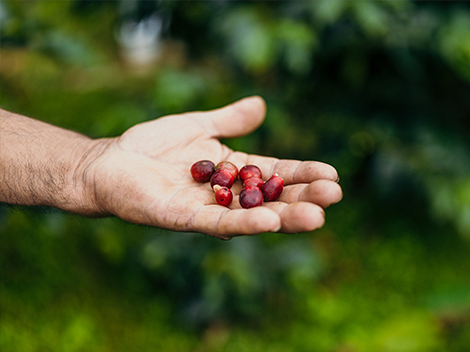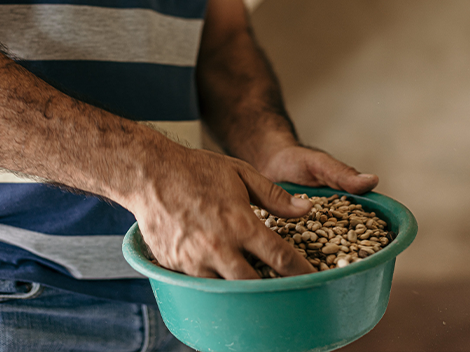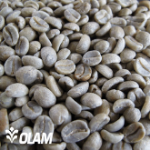- Home
- Origins
C-Market: $1.86 USD
as of 05/12/2023
- Offerings
Featured Origin
Mexico SHG
Vel posuere massa euismod pharetra sed erat velit ut sapien. Elit adipiscing quisque sit eget. Adipiscing viverra massa eros enim. Scelerisque sit interdum sit quis. Sit cursus mi semper dui malesuada neque quam senectus nulla. Dignissim in proin lacus vitae augue. Lectus morbi volutpat.
C-Market: $1.86 USD
as of 05/12/2023
- Categories
Featured Deal
Columbia Dulima
Vel posuere massa euismod pharetra sed erat velit ut sapien. Elit adipiscing quisque sit eget. Adipiscing viverra massa eros enim. Scelerisque sit interdum sit quis. Sit cursus mi semper dui malesuada neque quam senectus nulla. Dignissim in proin lacus vitae augue. Lectus morbi volutpat.
C-Market: $1.86 USD
as of 05/12/2023
- Home
- Origins
C-Market: $1.86 USD
as of 05/12/2023
- Offerings
Featured Origin
Mexico SHG
Vel posuere massa euismod pharetra sed erat velit ut sapien. Elit adipiscing quisque sit eget. Adipiscing viverra massa eros enim. Scelerisque sit interdum sit quis. Sit cursus mi semper dui malesuada neque quam senectus nulla. Dignissim in proin lacus vitae augue. Lectus morbi volutpat.
C-Market: $1.86 USD
as of 05/12/2023
- Categories
Featured Deal
Columbia Dulima
Vel posuere massa euismod pharetra sed erat velit ut sapien. Elit adipiscing quisque sit eget. Adipiscing viverra massa eros enim. Scelerisque sit interdum sit quis. Sit cursus mi semper dui malesuada neque quam senectus nulla. Dignissim in proin lacus vitae augue. Lectus morbi volutpat.
C-Market: $1.86 USD
as of 05/12/2023
$95.00

Bolivia Caranavi FTO
About This Coffee
About This Coffee
The Bio Arabica co-op represents something of a youth movement in Bolivian specialty coffee, in that the average age of the 45 producers who make up the group is only 30 years old, and the cooperative itself was only founded in 2017. The smallholder farmers who contributed to this lot grow on an average of 4 hectares apiece. The group has been working to improve production quality and volume since 2014, while maintaining sustainable practices with a particular focus on planting shade trees, which are also used for timber, bananas, and citrus.
| Country of Origin | Bolivia |
|---|---|
| Region | Caranavi |
| Producer Type | Cooperative |
| Farm Name | 45 smallholders |
| Co-Op | Cooperativa Agropecuaria Bio Arabica R.L. |
| Processing | Washed |
| Processing Description | Sun-dried on raised beds |
| Growing Altitude | 1200m – 1650m |
| Harvest Season | 2022/23 |
|---|---|
| Bag Weight | 70 KG BAG |
| Bag Type | Grain Pro / Ecotact |
| Plant Species | Arabica |
| Variety | Catuai, Caturra, Typica |
| Certifications | FLO Fairtrade Certified, Organic certified |


History of Bolivian Coffee
While production can be traced back to the 1920s, Bolivian coffee is not as widely known as others in the South American region. As a land-locked country, Bolivia has faced many challenges when it came to exporting its coffee. Its underdeveloped infrastructure meant that transporting coffee from the mountainous terrain around the capital city of La Paz to the seaports in Chile or Peru can be difficult, but Bolivia is an “emerging” specialty origin that roasters should an keep an eye on.
Growing Coffee in Bolivia
Approximately 95% of Bolivia’s coffee is grown in the Yungas, a region on the eastern slopes of the Andes known for its ideal coffee-growing climate that includes high elevation and consistent wet/dry seasons. Other coffee-producing districts in Bolivia include Caupalicam, Espiritu Santo, and Valle Grande. Most Bolivian coffee is grown approximately 2,600–7,500 feet above sea level, is virtually all washed coffee, and growers are typically smallholders and cooperatives. The types of coffee plants that are found in Bolivia include Typica, Caturra, and Catuai species.


History of Coffee in Zambia
The history of Zambian coffee seems familiar: men in Holy Orders of one sort or another arrive and plant seeds. But in the case of Zambia, missionaries did not introduce coffee farming until the 1950s. By the time commercial coffee production began in Zambia, the British had considerable experience in starting and operating coffee plantations in India, Kenya, and elsewhere. Planting coffee was an attempt to decrease a dependence on copper exports. Not surprisingly, the emphasis was on yield and production efficiencies. Plantations were large and orderly, grown in full sun on flat land, and processed in large wet mills wherever possible. Nevertheless Zambia made almost no appearance whatsoever on the world coffee stage until coffee was officially exported for the first time in 1985.
Growing Coffee in Zambia
The Northern province has the best conditions for arabica coffee cultivation in Zambia with its relative proximity to the equator and abundant altitude (Mafinga Hills being the highest point in the country at 2,300 masl). Most coffee grows from 1300 – 2300 masl. Zambia produces both washed and naturally processed coffee and has introduced some honey processing. A wide range of varieties including Catimor 129, Castillo, Java, and other trial varieties. Specialty grades are AAA, AA, AB and Peaberry.

Sample Roasting Guide
Consistency is key when sample roasting. Yet, your first crack won’t always happen at the same time, which makes it difficult to know when to end your roast. Use this guide to know when to discharge depending on how long it took you to reach first crack.


